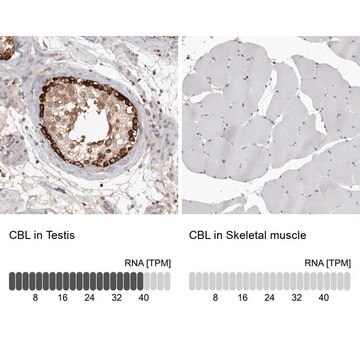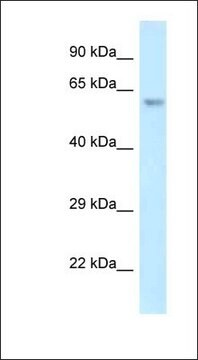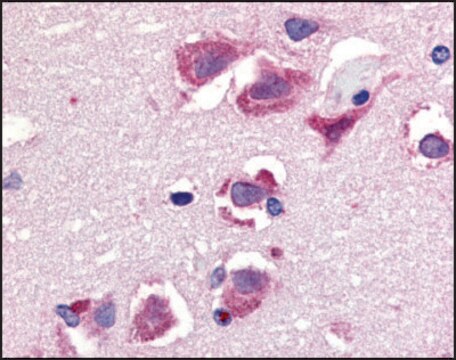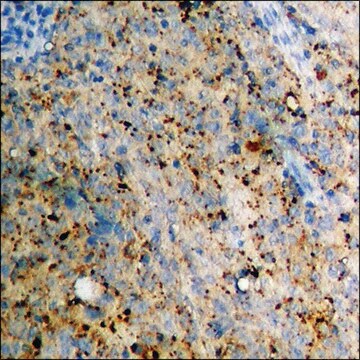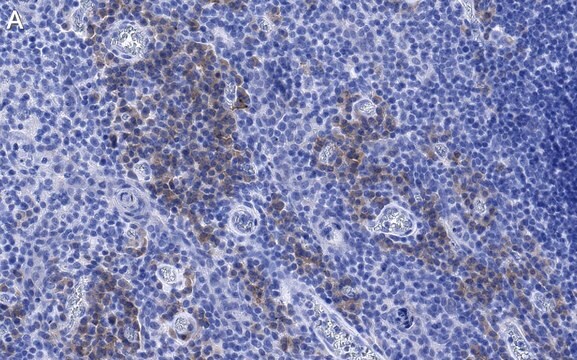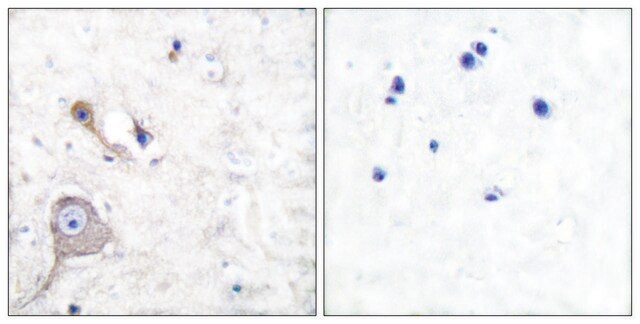MABF981
Anti-CXCR4 Antibody, clone 12G5
clone 12G5, from mouse
Sinônimo(s):
C-X-C chemokine receptor type 4, CXC-R4, CXCR-4, FB22, HM89, LCR1, Leukocyte-derived seven transmembrane domain receptor, LESTR, Lipopolysaccharide-associated protein 3, LAP-3, LPS-associated protein 3, NPYRL, Stromal cell-derived factor 1 receptor, SDF-
About This Item
Produtos recomendados
fonte biológica
mouse
Nível de qualidade
forma do anticorpo
purified immunoglobulin
tipo de produto de anticorpo
primary antibodies
clone
12G5, monoclonal
reatividade de espécies
human
técnica(s)
flow cytometry: suitable
immunocytochemistry: suitable
neutralization: suitable
Isotipo
IgG2aκ
nº de adesão NCBI
nº de adesão UniProt
Condições de expedição
dry ice
modificação pós-traducional do alvo
unmodified
Informações sobre genes
human ... CXCR4(7852)
Descrição geral
Imunogênio
Aplicação
Immunocytochemistry Analysis: A representative lot stained paraformaldehyde-fixed CHO cells transfected to stably express human CXCR4/fusin (Endres, M.J., et al. (1996). Cell. 87(4):745-756).
Neutralizing Analysis: A representative lot blocked SDF-1-induced lymphocyte chemotaxis using freshly isolated human PBMCs (Bleul, C.C., et al. (1997). Proc. Natl. Acad. Sci. U S A.94(5):1925-1930).
Neutralizing Analysis: A representative lot blocked the infection of CXCR4+/CD4+ rhabdomyosarcoma (RD) cells by seven HIV-1 (LAI, RF, Gun-1wt, Gun-1var) and HIV-2 (ROD A/B and CBL-23) strains as assessed by >95% reduced syncytium (multinucleated cell) formation due to viral infection-induced cell-to-cell fusion. Clone 12G5 also blocked Gun-1wt, Gun-1var, and CBL-23, but not the other 4 HIV strains from infecting HeLa/CD4 and C8166 cultures (McKnight, A., et al. (1997). J. Virol. 71(2):1692-1696).
Neutralizing Analysis: A representative lot blocked HIV-2 /vcp strain from infecting U87 cells transfected to express human CXCR4/fusin as assessed a reduction of syncytium (multinucleated cell) formation due to viral infection-induced cell-to-cell fusion (Endres, M.J., et al. (1996). Cell. 87(4):745-756).
Note: Although clone 12G5 binds cell surface CXCR4, efforts to immunoprecipitate or immunoblot CXCR4 were reported to be unsuccessful (Endres, M.J., et al. (1996). Cell. 87(4):745-756).
Inflammation & Immunology
Immunoglobulins & Immunology
Qualidade
Flow Cytometry Analysis: 1.0 µg of this antibody detected CXCR4 in Jurkat cells.
Descrição-alvo
forma física
Armazenamento e estabilidade
Handling Recommendations: Upon receipt and prior to removing the cap, centrifuge the vial and gently mix the solution. Aliquot into microcentrifuge tubes and store at -20°C. Avoid repeated freeze/thaw cycles, which may damage IgG and affect product performance.
Outras notas
Exoneração de responsabilidade
Não está encontrando o produto certo?
Experimente o nosso Ferramenta de seleção de produtos.
recomendado
Código de classe de armazenamento
12 - Non Combustible Liquids
Classe de risco de água (WGK)
WGK 2
Ponto de fulgor (°F)
Not applicable
Ponto de fulgor (°C)
Not applicable
Certificados de análise (COA)
Busque Certificados de análise (COA) digitando o Número do Lote do produto. Os números de lote e remessa podem ser encontrados no rótulo de um produto após a palavra “Lot” ou “Batch”.
Já possui este produto?
Encontre a documentação dos produtos que você adquiriu recentemente na biblioteca de documentos.
Nossa equipe de cientistas tem experiência em todas as áreas de pesquisa, incluindo Life Sciences, ciência de materiais, síntese química, cromatografia, química analítica e muitas outras.
Entre em contato com a assistência técnica